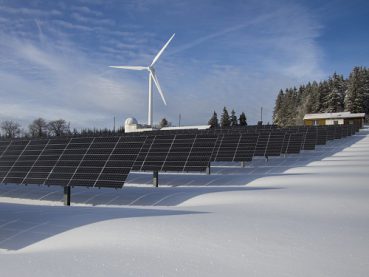
BloombergNEF’s reports of a record-breaking 27 per cent year-on-year increase in global investment in clean energy technologies and infrastructure could point to real progress being made towards hitting climate-change goals.
$755bn Increase – Asia Focus
Energy strategic research provider BloombergNEF’s annual investment report, Energy Transition Investment Trends 2022, has highlighted a record-breaking 27 per cent rise in clean energy investment, which equates to an increase of $755bn. BloombergNEF reports that almost half of all investment occurred in Asia.
Most Investment In Clean Power & Electrification
BloombergNEF reports that, together, clean power and electrification (renewables, nuclear, energy storage, electrified transport, and electrified heat) accounted for the majority of the investment ($731 billion), and hydrogen, carbon capture and storage and sustainable materials made up the remaining investment ($24 billion.)
The report showed that renewable energy (wind, solar and other renewables) attracted a record-breaking $366 billion investment in 2021, and electrified transport (electric vehicles and associated infrastructure) was the second-largest sector with $273 billion invested. The electric vehicle sales sector, for example, grew by an incredible 77 per cent in 2021!
Investment Despite Commodities Crunch
As Albert Cheung, Head of Analysis at BloombergNEF, pointed out in the report there was a 27 per cent increase in energy transition investment in 2021, despite a global commodities crunch creating input cots challenges for key clean energy technologies. This could be a sign of a real low-carbon transition by investors, governments, and businesses. Asia is reported to have made the biggest investment in clean energy technologies last year, but it is also very promising to hear that China, often reported as being climate change laggard, made the biggest transition Investment.
Clean Energy, But Not Clean Rivers
Clean energy investment, particularly in Asia, may be at a high but sadly, it seems that same concern for the environment may not have been shown by the UK’s environment agency in recent times. For example, following news last summer that sewerage has been discharged regularly into UK waterways by some water companies leaving almost one-third (32 per cent) of rivers failing to meet tests for good ecological status, recent reports show pressure from the top for a cover-up. Last week, for example, it was reported that Environment Agency Chief executive James Bevan attempted to deal with criticism about failures to protect waterways by sending a memo to staff threatening sanctions or dismissal for anyone making derogatory statements about the organisation inside or outside work. This apparent attempt to cover-up the pollution follows news that, last November, it was reported that staff were told to shut down and stop investigating low level pollution events (level 3 and 4 incidents), thereby axing important core pollution detection work.
What Does This Mean For Your Organisation?
International Energy Agency (IEA) figures show that electricity and heat generation correspond to over 40 per cent of global CO2 emissions from fuel combustion, with 70 per cent of the associated emissions coming from coal plants. This highlights how important it is to make the change to clean energy sources. The record-breaking 27 per cent year-on-year increase in global investment in clean energy technologies and infrastructure in 2021 highlighted in BloombergNEF’s report is, therefore, a very promising sign. It is also promising that China, for example, made biggest transition investment, which some would say it needed to do to start to bring about positive environmental change. With transport also being such a big polluter, its also promising news that electrified transport, which includes spending on electric vehicles and associated infrastructure, was shown to be the second-largest sector with $273 billion invested in 2021.The report makes positive reading but the job now is accelerate the rates and scale of change and investment if the world is serious about hitting its net zero by 2050 target.




